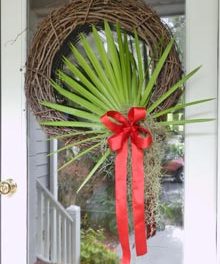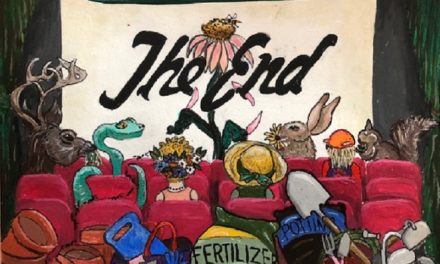 Everywhere you turn, there’s another sign of Spring’s impending arrival: sneaky peeks at emerging new foliage; buds on trees and shrubs; even some flowers have started to blow.
Everywhere you turn, there’s another sign of Spring’s impending arrival: sneaky peeks at emerging new foliage; buds on trees and shrubs; even some flowers have started to blow.
Do you know that term as applied to flowers? To blow? It’s from Old English, and it means to bloom or to flower – and this botanical usage is the root of the term “full-blown.” There’s a beautiful small tree called Shadblow (Amalanchier arborea, or Serviceberry), which gets its name from its regularly blooming at the time of the shad runs in the rivers.
The signals that make us know that Spring is just about here are subtle, sometimes ephemeral, but persistent about declaring the season’s change. Not just the easily noticed things like budding leaves and flowers. For one, the temperature is noticeably different (notwithstanding the little cold snap last week), with warmer daytime temperatures and not-so-cool nighttime temperatures. The garden seems to rejoice in this transition, even though the still present possibility of a surprise frost seems to make many plants cautious about fully committing to expose all their new growth to possible damage.
Many plants confront the changeable weather with some self-preserving strategies. Often, buds will open, somewhat tentatively, on one side of a shrub; or the first leaves or blooms to emerge will do so slowly, as if to make sure everything really is going to be all right before bursting forth in full glory. Our old Kieffer pear trees – one in front of the old house, two others behind – always seem to be on separate schedules. The tree in front is precocious, having just covered itself in those spectacular white flowers, while the two trees in the back yard haven’t even had their buds fatten yet. But they are protecting themselves and their eventual precious fruit – that flowering tree up front just barely missed having its season of bloom wiped out by the cold snap last week, while the two slower trees are assured of having blooms after the threat of frost damage is largely gone. Successful flowering is the way to successful fruiting.
Another of those things which announce the coming of Spring is the change in the light. It’s not just that the days are getting noticeably longer – although that obvious fact is annually manipulated by the absurd imposition of the abominable Daylight “Savings” Time. Believe me, the plants and the birds care not one whit about “spring forward, fall back.”
Certainly the days are getting longer, but what I especially cherish is the change in the light itself. It has a different quality from the low-angled blue-tinted light of winter. As the sun’s position in the sky rises with each passing week, the light becomes more direct. The new leaves in all the trees seem to color the air green/yellow with an essence of chlorophyll (now, please don’t destroy my elegant thought by mentioning that “essence” might just be pine pollen!). The light itself seems fresh and newly-emerged.
Central to all these leaves emerging and flowers blowing, to the mad dances of the birds and their frantic nest building, to the rapturous rhymes and playful courting of beautiful young people – central to all this is the force for life. This is the Garden: hopeful tending of living things, celebrating the rituals and processes for life to prosper and grow and replicate itself, working to comprehend the Gardener’s own place in these cycles, these processes, these eons of living things. The Gardener celebrates Spring’s arrival – indeed, he can hardly contain his excitement! – but he just as fully rejoices upon the other seasons’ arrivals. Each has unmatched challenges and irreplaceable pleasures. It is only Spring, however, which gets his sap rising.
The Garden Writer, on the other hand, is made of flimsier stuff. Take a look. Every magazine, every online blog or journal with a writer about gardening has an article – or several – on Spring. Every one. Even this one. It is a certainty as predictable as the Vernal Equinox that we Garden Writers will, every one of us, pen a piece on Spring, while all around us go about the business of Springtime.
Stravinsky’s Faun is not the only one caught up in these Rites. Go forth, y’all, and multiply.
——————————————————————————————————————————-
In the Beaufort area, Spring marks the beginning of that award-winning series of short programs at the Farmers Market in Port Royal, at noon on Saturdays. Called Lunch and Learn, and produced by the Lowcountry Master Gardeners, each hour long program features a different topic by a different presenter with expertise in the topic. The series begins on April 18 in the gazebo at the Heritage Park near the Naval Hospital. Apropos of this article’s theme of renewal and regeneration, I have been invited to present a program there on May 9, explaining how to make more plants using air layering. To check out the schedule of Lunch and Learn programs, internet users can go to this link: http://lowcountrymga.org/2015_Lunch_and_Learn_Schedule_updated.pdf







